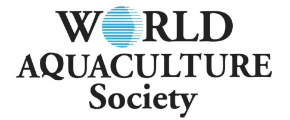AQUACULTURE IN JORDAN (REVIEW)
The Jordanian natural marine and freshwater fishery resources are rather limited and the freshwater aquaculture sector small, mainly due to the prevailing geographical and environmental conditions. Jordan is a semi-arid country almost entirely land-locked with a short marine coastline of approximately 27 kilometres on the northern Red Sea basin. The port city of Aqaba is where all of captured marine resources are landed and partly exported fresh and frozen mainly to the capital city of Amman. Aquaculture production has been rather stable in recent years and accounted in 2016 for around 65.3 percent of the overall national fish production, mainly consisting of farmed tilapia, common and mirror carps. The aquaculture sector started in the 1960s mainly along the northern regions of the Jordan Valley, but limited water resources and lack of technical know-how and managerial skills have limited the development of the sector. Freshwater aquaculture, mainly focusing on farming tilapia and several carps species, is carry out by an estimated 24 aquaculture entrepreneurs in small and medium facilities producing approximately 1119 tonnes of fish annually (in 2016). In the Jordan Valley there are about 5 000 small irrigation ponds (i.e. earth ponds lined with polystyrene) used for agriculture and some of them are also used for farming fish at low densities. The development of marine coastal aquaculture is limited by the availability of suitable on-growing sites and environmental concern, particularly with regards to potentially negative impacts on the existing coral reefs. Furthermore, competition for space from the tourism and marine transport sector is not encouraging the development, at least at sea, of the mariculture sector regardless the fact that the Jordanian national fish market has a stronger preference and demand for fresh and frozen products of marine finfish over freshwater species. Several critical limiting factors for inland aquaculture development includes: limited water resources, shortage and irregular supply of quality fingerling, high costs of imported feed and generally poorer quality of locally produced feed, lack of know-how in fish farm management, inadequate outreach being carried out by poorly trained extension staff, dry arid conditions much of the year with high temperature fluctuations, and presence of sandy soils. Marine aquaculture does not seems to have many developmental opportunities at present mainly due to the multi-use of the short coastline in the Capital Department (Al-Qasabah) of the Governorate of Aqaba. Furthermore, environmental concerns on possible negative effects of aquaculture activities on local coral reefs have not encouraged much institutional support. However, the Marine Science Station in Aqaba is nevertheless undertaking a series of aquaculture experiments in its land-based facilities. At present, as well as in the recent past, the annual fish production in the country does not satisfy the national demand, and an estimated 42500 tonnes of fish (around 95 percent of the fish consumed), mainly as fresh and frozen marine species, are imported annually much of which from neighbouring countries. The annual per capita fish consumption in Jordan remains rather low (at about 4.6 kg/year) compared to the world and regional levels. While this low figure is partly due to the lack of a fish-eating tradition in Jordan (as in much of the region), at least some of it is due to the poor quality of imported frozen and canned fish relative to a fresh, locally-grown product. Private fish producers are free to sell their products either through wholesalers or directly to retailers, supermarkets or restaurants through special arrangements or even directly to local consumers, with prices usually reflecting supply and demand in a free-market system. The live fish are sold to restaurants where there are small ponds that fish are cooked directly and sold in these restaurants. So, Populations living in rural areas of the country have not easy access to fish products, therefore the increase of freshwater fish production will facilitate the access of high-quality animal proteins coming from locally produced fish. However, there is a need to better understand existing domestic markets, consumer's needs and dietary habits and marketing strategy for aquaculture products.













